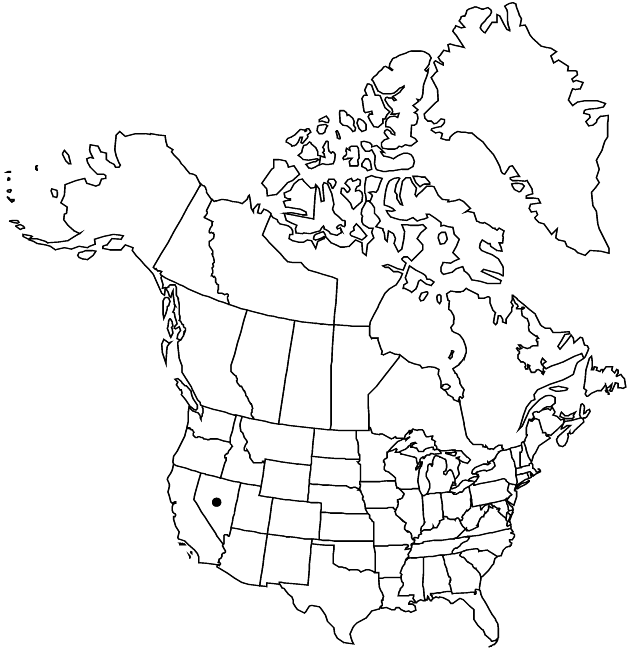Ericameria compacta
Phytologia 68: 152. 1990.
Plants 15–50 cm. Stems erect to spreading, green when young, becoming tan, branched proximally, often with scattered, crinkled hairs and short- stipitate-glandular hairs. Leaves mostly erect or ascending; blades oblanceolate to narrowly spatulate, 20–40 × 2–3(–5) mm, midnerves evident, apices acute to acuminate, faces short-stipitate-glandular, sometimes gland-dotted (sessile), resinous; axillary fascicles of 1–7 reduced leaves often proximally present, distally absent. Heads usually in paniculiform or cymiform arrays, sometimes borne singly. Peduncles 1–15 mm (bracts 0–3, usually resembling phyllaries). Involucres narrowly campanulate, 12–15 × 4.5–5.5 mm. Phyllaries 18–24 in (3–)4 series, tan, ovate or lanceolate to elliptic, 4–11 × 0.6–1.2 mm, subequal, mostly chartaceous, midnerves raised, evident, apices acute to cuspidate, herbaceous-tipped, abaxial faces resinous. Ray florets 0. Disc florets 10–16; corollas 9.1–11.5 mm. Cypselae tan to reddish, ellipsoid, 6–10 mm, glabrate or apically sparsely hairy; pappi off-white to brown, sometimes reddish, 7–9 mm. 2n = 18.
Phenology: Flowering late summer–fall.
Habitat: Sheltered, rocky to gravelly slopes in pine forests
Elevation: 2500–3500 m
Distribution

Nev.
Discussion
Of conservation concern.
Selected References
None.